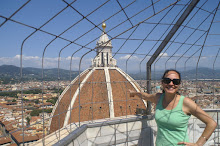Wikis are a great tool for the classroom. Last year we had an introduction to Wiki as part of a staff development day. They are a great way to get students communicating and reflecting on their own work as well as others. They can see the value of sharing information, ideas as well as their work. In photography, we used a class wiki as way of developing dialogue relevant to discussing and developing work. Students were able to add images of artists that influenced them, place up their own work for discussion as well. The students discovered the importance of personal reflection and constructive criticism of their own work as well as others. It was also a great way to share resources, tutorials, links and information relevant to the topics they were studying.
The Ning is a great tool also, particularly when you want to share and discover beyond the means of your own class. While I understand the wiki can do this also, I found the ning a bit like a social site of sharing information, blogging and discovering with those in the network. In the classroom, I feel regardless of how much time is spent setting the ning to suit the classroom needs, students will be be distracted by the "social" aspects rather than focus on the important stuff. There are so many options available to us, I feel, for me, there is a host of sites and tools I can use to harness the opportunities of WEB 2.0, without having to use valuable time monitoring students use of social networking in the class through apps such as Ning. From a teachers network perspective, I think it's great. Sharing ideas, resources and showcasing student work is all great.
In my personal life and as well as at school I have used many of the WEB 2.0 tools. Both networking for fun and social purposes, facebook, linked in (for professional networking), photo sharing and development, I only wish I had more time for myself. Since beginning the WEB 2.0 course, I have implemented and allowed students to discover and learn about various tools for themselves. In food technology, we have set up communal reflection blogs for prac lessons and recipe evaluations, share ideas and make suggestions for future cooking classes. In Yr7 technology, the use of bubbl.us to create and share mind-maps both individually and as a class that can be shared with everyone. Developing promotional posters on glogger kept a normally very noisy unsettled class so engaged they barely spoke. As we move forward with the tools of WEB 2.0 and we become more familiar with the possibilities and uses of all the resources now available and as we learn to gain more control of them, we will continue to use them more and more on a daily basis to enhance and engage our learners.
Monday, July 12, 2010
Module 8
Module 8 was not one of my favourites. I couldn't use Scootle, the PDF was no longer available to download and I couldn't log in. After emailing the relevant contact, I got no response. So although I was able to look around and get an idea of the resource, I couldn't get into it to get a real good picture. I've used the social networking sites and don't really feel they are for the classroom. Students are not disciplined enough to use them ONLY for the given purpose and will be distracted by their own socialising on the site. This is already a distraction in the classroom, students accessing sites such as facebook when they should be researching or focusing on other tasks. I do see some benefits at home, my daughter will often use facebook to discus homework and assessments with classmates. She does still need to be monitored, or the homework gets forgotten and the social chatting takes over. Second life, I'm not so sure about. While I understand the idea of a virtual classroom, connecting with students in other schools, sharing resources and team teaching, however, still a major distraction for students to sway from the right track. While these are great tools, I still feel they are more for social life than school, apart from scootle. I would certainly not rule out second life, but would need to really explore this in more detail and get a good understanding of what control I can have over what my students do when they login. In saying that, from a visual arts and media perspective, I do se some potential for further exploration and teaching-learning potential.
Subscribe to:
Comments (Atom)



